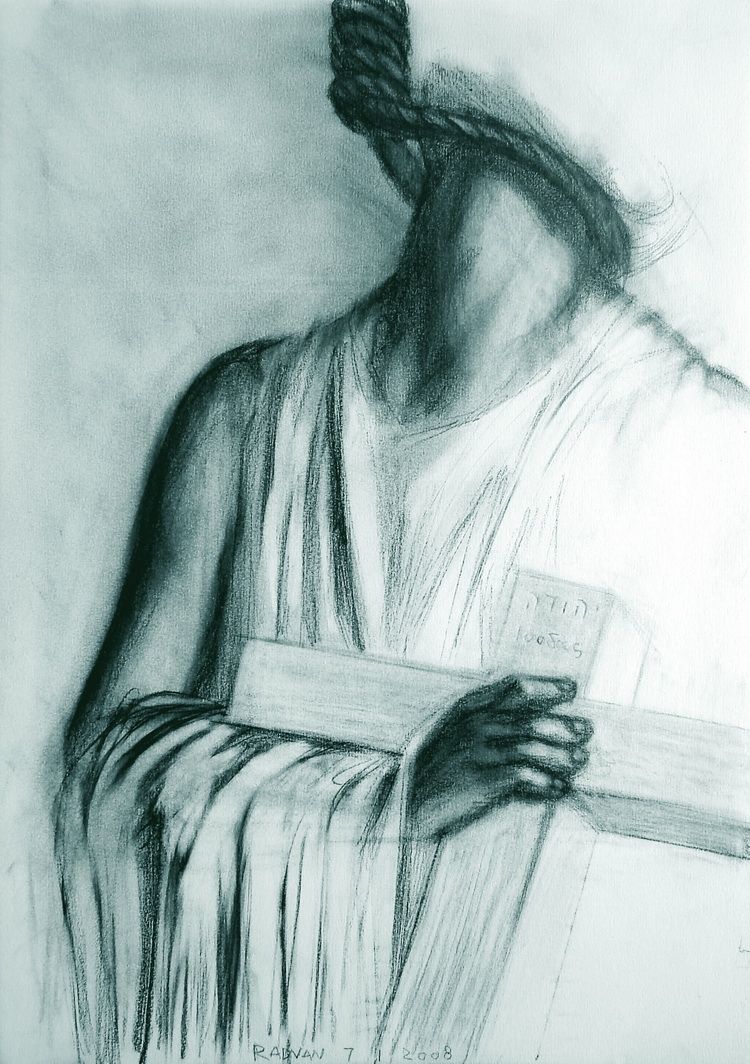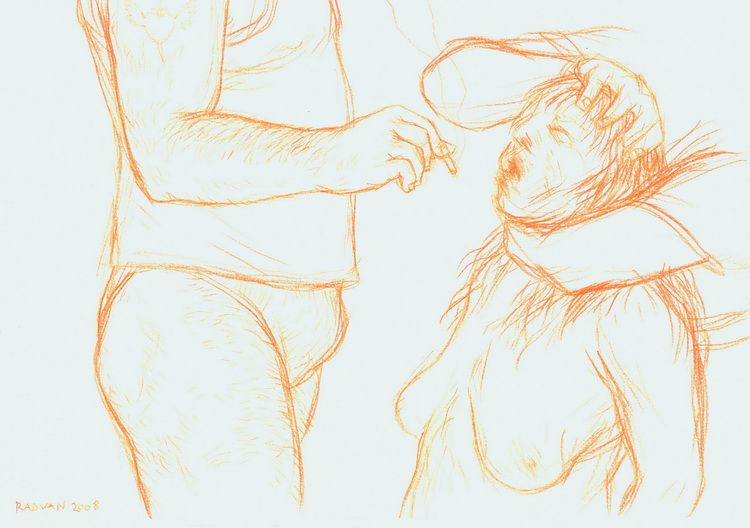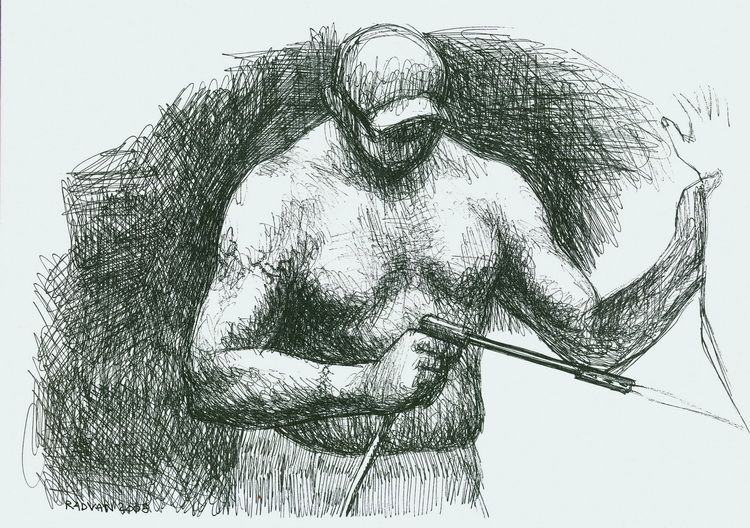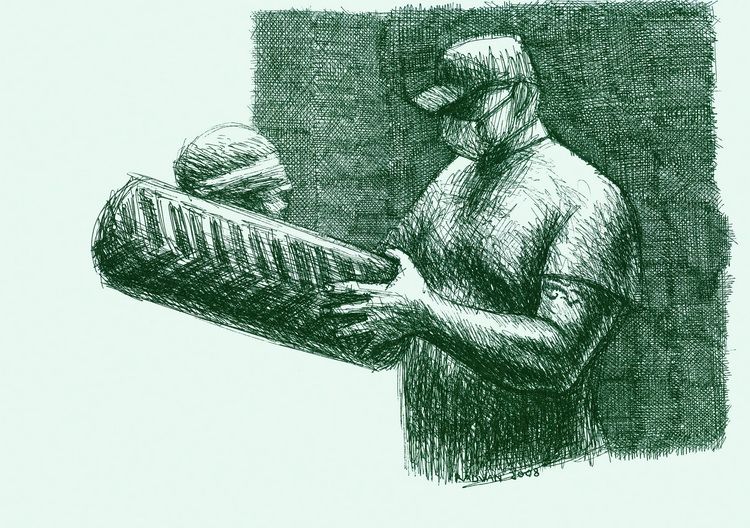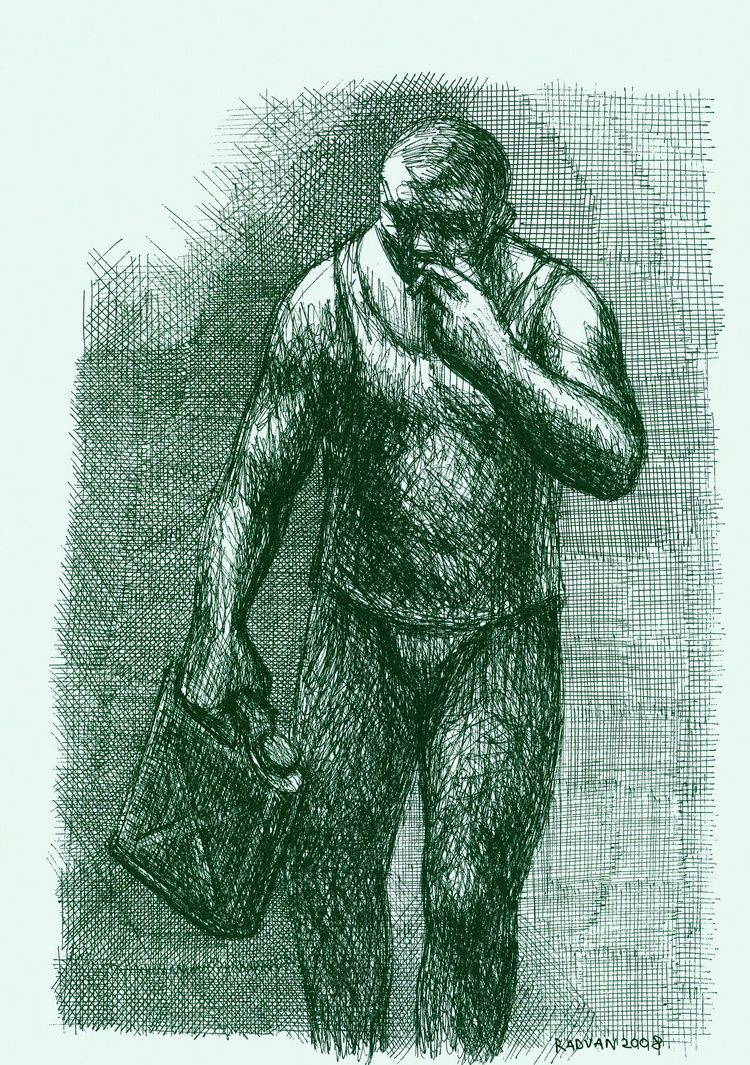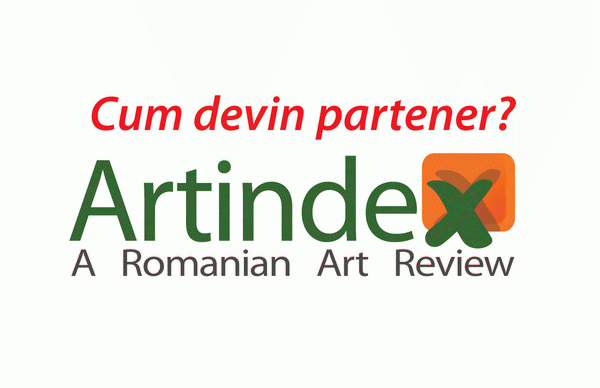Retro-expozitii: “Omagiul lui Iuda si Cruciatii” de Alexandru Radvan (2/2)
It is not a bet with the unbearable but also it is not about the fever of rebelliousness. It has to do with the abyss, that abyss from the humans inward, from my inner which torments me and absorbs me in thoughts. Once you have the courage to get down, you become free and you also acquire the strength to approach everything no prejudiced. In the abyssal dark, Judas can obtain a special aura, that of a possible hero. He becomes the one who transforms the story of a peculiar preacher into the profound drama of the Gospels. Overwhelmed by our bigotry and hypocrisy, we had hastened to condemn treachery forever, to exile him in the lowest circle in hell and we cast the anathema upon his name .
We justified our action through our Christian names, invoking God’s will. Who cannot forget, He or we? Who cannot understand, He or we? Who feels the need of revenge, He or we? Who is limited, He or we? Even if God would have forgiven him we have had not done this. There is no knowing whether God had not forgiven him, the same we do not know if Judas had not made what he was supposed to do, urged by our Celestial Father. Judas is as important as the others, apostles and Shepherds. Without him and Pillat, everything would have remained another history of a Jew sectarian instigator in a Judea full of agitators and religious fanatics.
From the abyss appear the stout appearances of the Crusaders. They are people who cannot forgive or trying at least to understand and they are those whose life and others sufferings do not matter too much. Perhaps, at one time, the victim and the aggressor will communicate in a special, discrete matter at a very profound level. Closer to an initiated ritual touched by suffering’s delight and the one of causing pain. Violent representations? Sadism, absurdity, excess? Daily, we see images on TV and we hear more pitiless actions, but we do not pay any attention to them. Have you ever noticed what animated credits associated with dramatic music recommend the news from the war theatres of the world? Have you also observed our indifference regarding them? Remote tragedies of some strangers. But, when we came across these things in a painting or a drawing, then our sensibility is touched. We become attentively, even horrified, eventually we meditate.
Art is not a comfortable armchair which causes to the spectator only aesthetical pleasures and no worries. It is not entertainment. It has the power to make things more visible and the Crusaders are near us, they are us. They are not only medieval knights or heroes fighting for truth and noble purposes. They are, today, the ones from our approach ready to make compromises in the name of certain goals in which maybe, they do not believe for some time. We can choose: we have the makings of a victim or aggressor. When was the last time when we watched the slag from our souls? Where do I stand, me, the spectator confronted by all these? Where does the author stand?
The burning stakes were changed into canister of petrol and the fanaticism was absorbed with indifference. Everything passes with a certain boredom, weariness into a world without horizon, our world. We look as in a mirror, this is our face now. As the case stands, even Judas seems an amateur.
Alexandru Rădvan
*“You are incapable of peering this! “, The 26 Picture, from the Cycle Production “Los Desastres“ by Francisco Goya
There is a big difference between tempting and misleading somebody.[…] Temptation represents the opportunities which do not involve a certain achievemen.[…]Deluding somebody means advising man to conceive and follow a wrong way.
Blaise Pascal, Pensées
If Good is the exception and Evil is the rule of human’s behavior, and ignorance encourages Evil, then temptations, martyrdoms, tortures represent the path towards Good which transgresses Evil.
The series “Homage to Judas and the Crusaders” signed by Alexandru Radvan illustrates “the last temptation” apostle Judas, the traitor. He hangs himself tormented between betrayal and the guilt of his action. The achievement of the betrayal, the psychological pressure the moment in which the temptation becomes a fact and the constant question in the background, if not Judas is the one that fulfills the Divine will, are some of Alexandru Radvan’s questions. All is in plain sight, compassion and abjection, complicated and simple, profound and straight, pushing the tragedy to the endurable limit.
The crucifixion, as a paradigm of a maltreated mankind rewrite in Alexandru Radvan`s creation the conjugation of two main coordinates of our world: possession and brutality. The cross, as a symbol of unendurable gives back the man in his grace and his fragility. The basic continuous question is the one that triggers the human drama. The man being in the situation to choose between good and evil.
Nowadays, the art starts to have a different relation with the transcendence. Living in a world without myths and legends engenders the lost of the sacred characteristic on a social and also on an artistic level. In 1757 the Irish philosopher Edmund Burke distinguishes at the birth of the aesthetical emotions, `the positive pleasure` caused by beauty and `the negative pleasure` caused by sublime. The “negative pleasure” arise as a result of a pain analysis qualified as a `delightful horror`. A pleasure which has appeared as a result of a danger which can lead to astonishment, admiration or respect. Radvan feels out this pleasure within the framework of his paintings. The drawing becomes a mean of self-knowledge and reflection.
His Crusaders are yesterday’s and today’s people put in extreme statuses. Situations which most of the time are being dictated, imposed by others. The impossibility of choice, harassing, abuse and psychic stress sketches a world seized with terror and fear. A slashed humanity prevailed by violence and betrayal.
Radvan`s paintings interrelates directly the spectator. Trauma, futility, grotesque, bestiality are explored areas in his art which invite us at a renewal of our responsive knowledge. Often, among his artistic projects it is about a sensorial and empathic stimulus where the eye almost `cannot watch`.
Guido Ceronetti has spoken at one time of the never-ending degradation of the world and of the fact that man has not given birth to all the crimes found inside him in latency yet. Radvan is preoccupied of this degradation, of the darkness and unexpected from human nature, of the unseen face of the things.
Homage to Judas and the Crusaders emphasize a tyranny of reality. A reality based on illusion and destruction. Judas can be each one of the Crusaders, the same as every Crusader can be Judas. Judas can be anyone of us.
Curator: Diana Dochia









